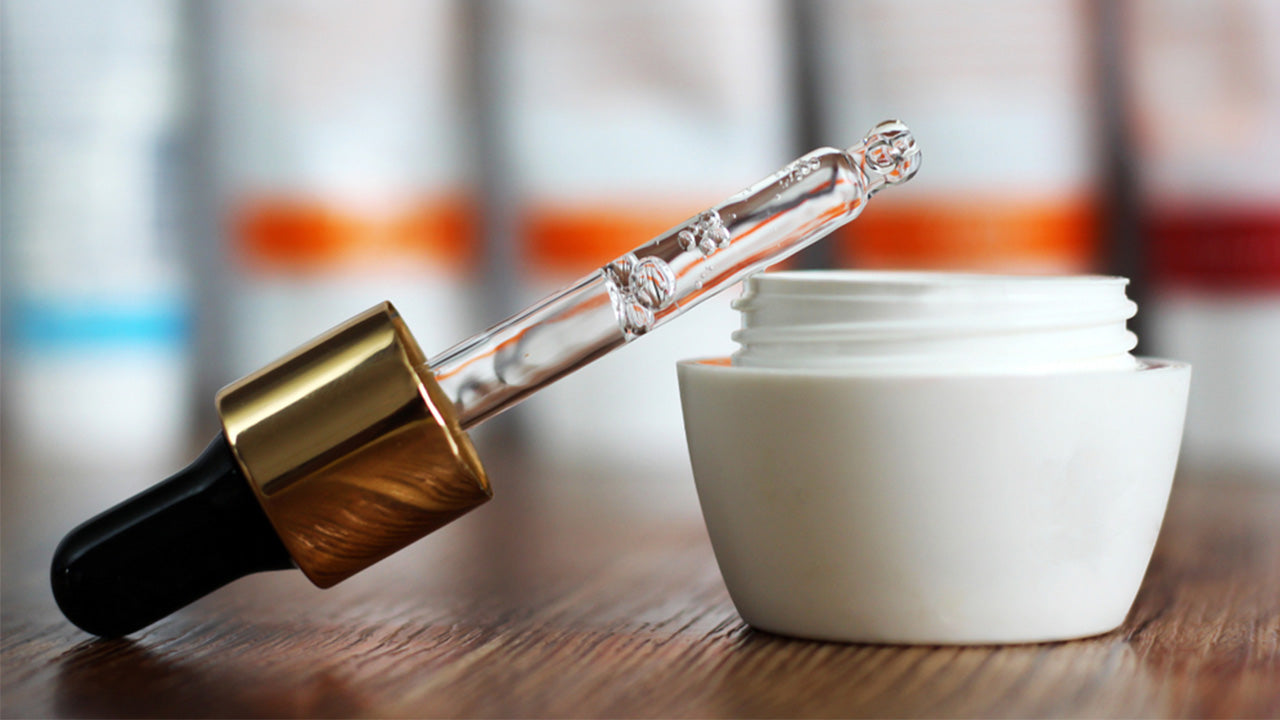How to Prevent and Treat Gum Disease
 By: by Amino Science
By: by Amino Science

Your parents might have encouraged you to brush your teeth when you were a child, but if you’re like many people, it’s possible you still have some signs of gum disease. In fact, the Centers for Disease Control and Prevention (CDC) states that almost half of Americans aged 30 and older have some form of the disease. And if that doesn’t make you stand up and take notice, maybe this will: gum disease is the leading cause of tooth loss in the United States. If you’d like to know how to keep yourself out of this particular majority, come with us as we discuss how you can prevent and treat gum disease.
What Is Gum Disease and What Causes It?
Gum disease, or periodontal disease as it’s also known, is an infection of the tissues surrounding the teeth. While early stages of the disease result in redness, irritation, and inflammation of the gum line, untreated gum disease can eventually progress to tooth loss.
Gum disease is caused by the bacteria that live in the mouth. Every time we drink liquids or eat foods that contain sugars or starches, these bacteria form a sticky substance called plaque. If plaque isn’t removed regularly, it can harden into tartar, or calculus, which can extend below the gum line. Like plaque, tartar is also composed of bacteria, but its hardness makes it difficult to remove without a dental visit.
If either plaque or tartar is allowed to remain on the teeth, gum disease is likely to develop—but the type that’s seen depends on the stage of the condition. The two main types of gum disease are:
- Gingivitis: The earliest stage of gum disease is gingivitis, which is the stage most people are familiar with. When you have gingivitis, your gums may appear red and puffy and bleed when you brush or floss your teeth.
- Periodontitis: If gingivitis isn’t treated, it may advance to periodontitis, a condition in which the chronic inflammation of the gums spreads below the gum line and begins to infect the bone and surrounding tissues.
Periodontitis can be broken down into several different types as well. The most common of these are:
- Chronic periodontitis: This is the most common type of periodontitis and the type seen most often in adults. Caused by buildup of dental plaque and characterized by receding gums and the formation of pockets, chronic periodontitis usually progresses slowly but eventually results in tooth loss if not treated.
- Aggressive periodontitis: This type of periodontitis occurs rapidly and can lead to early tooth loss. Aggressive periodontitis is uncommon but tends to run in families.
- Necrotizing periodontal disease: This type of periodontitis results in necrosis (tissue death) of the gums, ligaments, and bone supporting the teeth. Necrotizing periodontal disease generally occurs in people with compromised immune systems or those suffering from malnutrition.
Symptoms of Gum Disease
The symptoms of gum disease vary a bit depending on which stage is present. People with the initial stage, gingivitis, may experience the following symptoms:
- Red, swollen, or tender gums
- Bleeding gums with brushing or flossing
- Receding gums
- Bad taste in the mouth
- Bad breath
If gum disease is allowed to progress to periodontitis, the following additional symptoms may be present:
- Dark red or purple gums
- Teeth that appear longer due to gum recession
- Increased space between teeth
- Pus between teeth and gums
- Sensitive teeth
- Loose teeth
- Change in bite
Risk Factors for Gum Disease
Although poor oral hygiene is the main cause of gum disease, there are certain additional factors that can increase your risk of developing the condition. These include:
| Tobacco use | Stress |
| Diabetes | Obesity |
| Heredity | Dry mouth |
| Crohn’s disease | Immune compromise |
| Hormonal fluctuations | Defective fillings or poorly fitting bridges |
| Malnutrition | Teeth that are difficult to clean |
Best Ways to Prevent and Treat Gum Disease
The best way to prevent gum disease is to practice good oral care at home and see a dentist for regular check-ups and professional cleanings. While many of us were taught that two cleanings a year were the rule, many dentists now recommend that people with good oral care and no risk factors be seen only once a year. However, individuals with signs of gum disease or a family history of the condition may want to speak with their dentist about a schedule that works best for them.
Whatever your situation, proper professional dental care and good oral hygiene can help reverse the signs of gum disease or stop it from worsening. To help prevent or reverse inflammation of the gums and protect your teeth and overall health, try these home remedies.

Brush and Floss
The best way to have and keep healthy gums and teeth is to make sure you brush your teeth for 2 minutes at least twice every day and floss at least once. For brushing, choose a soft-bristled brush that’s gentle on your gums—and be careful about applying too much pressure. Using gentle strokes can help prevent damage that may actually lead to receding gums.
In addition to manual and electric toothbrushes, some companies are now making ionic toothbrushes, which studies have shown may have an even greater capacity for cleaning the teeth. Ionic toothbrushes work by releasing positive ions that temporarily change the polarity of the surface of the teeth. This change in polarity not only repels bacteria but also neutralizes the acids they produce. The end result? Cleaner teeth that stay clean longer.
Whatever toothbrush you choose, don’t forget to brush your tongue—or use a tongue scraper—as well. Many people skip this part, but your tongue can hold even more bacteria than your teeth, so don’t neglect this important part of your oral health.
Use Mouthwash
A mouthwash that kills bacteria is a good follow-up to brushing and flossing. And some of the most effective mouthwashes can be made at home with a few simple essential oils. Not only does the use of essential oils date back at least 2,500 years, but science has also found that a number of oils have antibacterial and anti-inflammatory properties that make them perfect for oral care. Some are even powerful enough to stop a tooth abscess.
If you’d like to try your hand at creating your own personal mouth rinse, choose oils like oregano, peppermint, tea tree, eucalyptus, myrrh, cinnamon, and clove, which are great at killing bacteria and can be mixed and matched to create the perfect mouthwash.
Just remember that essential oils are extremely potent and should first be diluted in oil or water. Using a carrier such as coconut or neem oil can be a great choice, as these oils possess antibacterial properties of their own. A recent study even showed that coconut oil is as effective as chlorhexidine in reducing the bacteria most responsible for tooth decay, and another found that neem oil can be used to reduce both plaque and caries.
Eat a Healthy Diet
Diets that emphasize anti-inflammatory foods such as fresh fruits and vegetables, yogurt, whole grains, and healthy fats and limit red meat and the simple starches and sugars found in unhealthy foods like white bread, soda, and junk food can help reduce plaque-producing bacteria in the mouth and give your gums and teeth the vitamins and minerals they need to stay strong and healthy.
Don’t Use Tobacco
Studies have shown that people who use tobacco products have twice the risk of developing gum disease as people who don’t. In addition, tobacco negatively affects the immune system, which makes it more difficult to protect the gums from infection and harder for the gums to heal after an infection (or injury) has occurred.
Advanced Treatment for Gum Disease
If gum disease is allowed to progress to periodontitis and more advanced treatment is needed to augment home oral care, your dental hygienist or dentist may opt to perform additional procedures.
Deep Cleaning
During a deep cleaning, procedures called scaling and root planing are performed. Scaling involves the use of either hand-held or ultrasonic instruments to remove plaque and tartar—including below the gum line and within any periodontal pockets. Afterward, root planing is performed to smooth any rough spots on the root surfaces to prevent the reattachment of bacteria, plaque, and tartar.
After deep cleaning, sustained-release antibiotics or chlorhexidine may be placed in the periodontal pockets to eliminate any remaining infection. Scaling and root planing are performed under local anesthesia and may take more than one visit to complete.
Surgical Treatment
In advanced stages of gum disease, surgical procedures may be needed. Some of the most commonly performed procedures are:
- Flap surgery: This procedure is used to address deep pockets by creating a flap in the gum so the pocket can be reached, performing scaling and root planing, recontouring bone as necessary, and then suturing the gum back in place.
- Soft tissue graft: If severe gum recession has taken place, tissue may be transplanted from the roof of the mouth or other donor site to help prevent any further loss of gum tissue and to cover the exposed tooth root.
- Bone graft: In cases involving bone loss from advanced periodontitis, synthetic or natural bone is used to stabilize the tooth to help prevent its loss and to provide an area for regrowth of bone to take place.
To help accelerate recovery from surgery, supplement with Heal, an essential amino acid formula proven to help maintain healthy inflammation levels.
Over the years, some studies have shown a link between gum disease and an array of serious health problems, including strokes, heart attacks, and other complications of heart disease. However, other studies have been unable to confirm whether poor oral health is a causative factor in systemic disease or simply associated with it.
In other words, researchers are unable to verify whether a relationship exists in which additional, as yet unknown factors may be going on or whether gum disease is directly causing these medical conditions.
Regardless, poor dental health can still lead to tooth loss, and that can cause a whole host of complications, including poor nutrition due to an inability to eat properly. So whether you have gingivitis or periodontitis (or neither), make it a point to practice good habits because it’s never too late to start taking care of your mouth.

Up to 25% off Amino
Shop NowTAGS: conditions
Join the Community
Comments (0)
Most Craveable Recipes




 833-264-6620
833-264-6620



















